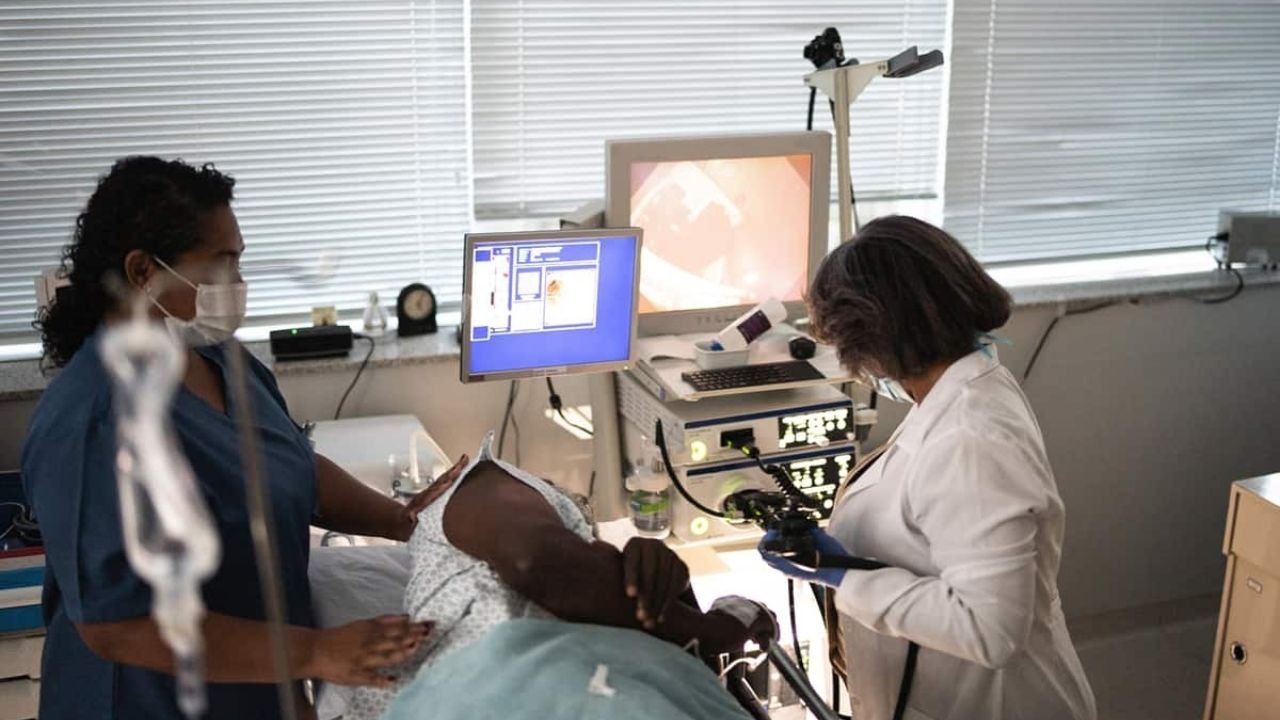The flu is more than a seasonal problem. It is a viral illness that spreads quickly through homes, schools, and workplaces. It affects millions worldwide each year. The stages of the flu explain how this illness starts silently, becomes intense, and finally fades away.
Understanding the stages of the flu helps you prepare. You know what symptoms to expect. You know how long recovery may take. You also know when you are contagious and when you are safe to return to normal life. Many also ask, what are the five stages of flu? This article covers that in detail.
What is the Flu?
The flu is short for influenza. It is caused by influenza viruses that mainly attack the respiratory system. It spreads through tiny droplets when a sick person coughs, sneezes, or even talks. These droplets travel through the air and land in the nose or mouth of others.
The flu is not the same as the cold. A cold develops slowly, with mild symptoms. The flu comes suddenly. It brings fever, chills, cough, and body aches that can last for days.
The stages of the flu describe how infection begins, worsens, peaks, and finally heals. Each stage highlights the body’s fight against the virus. Each stage gives signs that help people know when to rest or seek care.
Why Knowing Stages Matters?
Knowing the stages is more than just information. It helps you act wisely during illness. You can track your body’s changes and avoid panic when symptoms get worse. You can also protect family members by knowing when you are most contagious.
This knowledge is helpful for parents managing sick children. It guides workers deciding when to stay home. It protects older adults who may face complications.
Many people ask, what are the five stages of flu? The stages are infection, first symptoms, peak illness, turning point, and recovery. Understanding these steps makes it easier to manage the illness safely.
Stage Zero: The Hidden Beginning
Stage Zero is Day 0. This is when the virus first enters your body. You feel normal. You may not even know you are sick. But inside, the virus begins multiplying.
The flu spreads easily at this stage. You can pass it to others even before showing symptoms. This is why flu outbreaks grow so fast. One person may unknowingly infect many.
The stages of the flu begin silently here. It is the most dangerous stage because no one suspects infection. Preventive steps like handwashing and avoiding close contact are crucial.
Stage One: First Symptoms Appear
Stage One usually begins on Day 1. The immune system detects the virus. It starts producing antibodies to fight back. Inflammation begins. Fever rises. Body aches start.
You may feel a sudden headache. Muscles feel sore. You may have chills and shivering. Weakness spreads across the body. Many people notice they become sick very quickly.
This stage is when you realize it is not just tiredness or stress. It is the flu. Resting, drinking fluids, and calling a doctor if you are at high risk is important here. The stages of the flu now move from silent to visible.
Main early symptoms:
- Sudden high fever
- Headaches
- Muscle pain
- Weakness and chills
Stage Two: Symptoms Get Stronger
Stage Two is usually Day 2. The flu becomes harder. The fever stays high. The cough grows louder. The nose becomes congested. Breathing feels harder. This is when you feel too weak to leave the bed. Even simple tasks seem impossible. The body feels drained of energy. Many people lose appetite. Fatigue is severe.
The stages of the flu at this point are overwhelming. Recovery feels far away. But this stage is part of the normal process. With fluids, rest, and medication if prescribed, the body continues fighting back.
Symptoms in Stage Two:
- Heavy cough
- Stuffy or runny nose
- Fever with chills
- Joint and body aches
Stage Three: Peak of Illness
Stage Three is Day 3. It is the worst part of the flu. The fever stays high. The throat becomes sore. The cough is dry and painful. Even lifting your head feels hard.
Children may vomit or have diarrhea. Adults may feel extreme weakness. This is the stage when many people wonder if they should go to the hospital. For those with asthma, diabetes, or weak immunity, it can become life-threatening.
The stages of the flu peak here. It is the hardest stage for both patients and caregivers. Monitoring symptoms closely is important.
Emergency signs that need care:
- Breathing problems
- Chest pain or pressure
- Dizziness or confusion
- Severe weakness
Stage Four: The Turning Point
Stage Four is Day 4. This is when the body starts gaining control. The fever lowers. Body aches reduce. Energy begins to return. The cough changes. It may shift from dry to wet. This shows mucus is leaving the lungs. The body starts healing, but tiredness remains. Overexertion during this stage may bring fever back. Rest and patience are important. The stages of the flu move from peak to healing here.
Stage Five: The Recovery Stage
Stage Five is Day 5. The fever is gone. Congestion begins to clear. Breathing feels lighter. Energy slowly returns. But recovery is not full yet. The cough may remain. Hoarseness and throat irritation may continue. Weakness may still affect your body.
This stage gives hope. You are improving. Rest, fluids, and light meals are key. The stages of the flu are almost over, but your body needs more time. This is also the best time to answer, what are the five stages of flu? The answer is infection, first symptoms, peak illness, turning point, and recovery.
Stage Six: Regaining Energy
Stage Six is Day 6. Most people feel stronger. They can sit up, eat well, and walk around. But cough and fatigue may still remain. Some people return to work too early. Doctors advise waiting at least 24 hours after fever ends. Rushing back may spread flu to others or slow recovery. The stages of the flu are nearly finished here. The body feels normal again, but it is still healing inside.
Stage Seven: Back to Routine
Stage Seven is Day 7. People usually return to routine life. Work, school, and normal tasks seem possible. The cough may remain but is less severe. This stage shows strong recovery. But in some cases, cough may last for weeks. Flu can leave the airways irritated. The stages of the flu show clear improvement at this point. Still, extra care keeps relapse away.
Stage Eight: Clear and Safe
Stage Eight is Day 8. For most people, this is the all-clear. You are no longer contagious. Adults can go to work. Children can return to school. Energy feels normal again. But some weakness may remain. Exercise should be light. It takes time to fully regain strength. The stages of the flu end here. Life returns to normal, but the body continues to restore itself.
Who Recovers Faster?
Recovery depends on age, immunity, and health. Some heal in a week. Others take longer.
| Group | Recovery Time | Notes |
| Children | 5–7 days | May face vomiting or diarrhea |
| Healthy adults | 7–8 days | Often recover faster |
| Seniors | 10+ days | Higher risk of pneumonia |
| Chronic illness patients | Longer | Must seek care early |
When to Stay Home?
Flu spreads fast. Staying home is the best way to protect others. Doctors recommend waiting at least 24 hours after fever ends before going out. This prevents spreading flu in schools, offices, and public places. It also helps your body heal better. Skipping work for a few days is better than infecting others.
When to Call a Doctor?
Most flu heals at home. But some cases require urgent help. You should not ignore severe signs. Warning signs include:
- High fever returning
- Difficulty breathing
- Chest pain
- Severe cough with thick mucus
- Extreme weakness
The stages of the flu sometimes lead to complications. Quick medical help prevents them from getting worse.
Recovery Tips That Work
Good habits make recovery smoother. Sleep is most important. It allows the body to fight and heal. Fluids keep you hydrated. Tips for faster recovery:
- Sleep longer hours
- Drink water and teas
- Eat light and warm meals
- Avoid stress and heavy work
- Wash hands often
These habits reduce discomfort. They speed up healing through the stages of the flu.
Contagious Period
Flu is tricky. People spread it even before symptoms appear. Most remain contagious for seven days after signs begin. Children may spread it longer. This makes flu hard to control. The best way to stop spread is staying home and practicing hygiene. The stages of the flu include silent spread and visible illness.
Possible Complications
The flu sometimes causes more health issues. Seniors, children, and those with weak immunity are most at risk.
| Complication | Risk Group | Signs |
| Bronchitis | Adults | Wet cough, chest pain |
| Pneumonia | Seniors | High fever, weakness |
| Ear infections | Children | Ear pain, fever |
These complications may need medical care. They show why flu should not be taken lightly.
Flu vs Cold
People often confuse flu with cold. But they are very different.
| Feature | Flu | Cold |
| Fever | High | Rare |
| Onset | Sudden | Slow |
| Body pain | Strong | Mild |
| Fatigue | Severe | Light |
| Danger | Higher | Lower |
The stages of the flu are sharper and stronger compared to a cold. Recognizing the difference helps treat the illness properly.
Flu in Children
Children often face stronger flu. Their fever may be very high. Vomiting and diarrhea are common. Weakness is intense. Parents must monitor hydration and breathing. If a child refuses food or fluids, seek medical help. Children also spread flu faster, making rest at home even more important.
Flu in Seniors
Older adults recover slowly. Weak immunity makes them more vulnerable. Pneumonia is a serious risk. Vaccines protect seniors. Rest and fluids are vital. The stages of the flu often last longer in older adults.
What is the Recovery Timeline?
Flu follows a predictable path. Symptoms peak around Day 3. Relief starts by Day 5. Full recovery comes by Day 8 or later.
| Day | Stage | Signs |
| 0 | Infection | No symptoms yet |
| 1–2 | First symptoms | Fever, aches, chills |
| 3 | Peak illness | Severe weakness |
| 4–5 | Turning point | Fever lowers |
| 6–7 | Recovery | Energy returns |
| 8+ | Clear | Back to normal |
This timeline explains how the stages of the flu unfold step by step.
Conclusion
The stages of the flu describe the full journey of illness. It starts silently on Day 0, peaks by Day 3, improves by Day 5, and clears by Day 8. Recovery may take longer in children and seniors.
Many ask, what are the five stages of flu? The answer is clear: infection, first symptoms, peak illness, turning point, and recovery. Each stage brings new signs but also signals progress.
By knowing the stages of the flu, you can rest wisely, prevent spread, and protect others. With proper care and patience, most people recover in one to two weeks.
Frequently Asked Questions (FAQs)
Q1. How long does the flu last?
Ans. The flu usually lasts one to two weeks. Most people start to feel better by Day 5 or 6. But cough and tiredness may continue for another week or more. Children and seniors may take longer to heal.
Q2. What are the five stages of flu?
Ans. The five stages include infection, first symptoms, peak illness, turning point, and recovery. These stages explain how the flu begins, gets worse, and slowly heals. The stages of the flu usually start on Day 0 and end around Day 8.
Q3. When should I see a doctor for flu?
Ans. See a doctor if symptoms get worse instead of improving. Seek urgent care for breathing problems, chest pain, high fever returning, or confusion. Children and seniors should be checked earlier, as their risk is higher.
Q4. Is flu still contagious after fever goes away?
Ans. Yes, flu can remain contagious even after fever ends. Doctors recommend staying home for at least 24 hours after fever disappears without medicine. This helps prevent spreading the virus to others.
Q5. How can I prevent flu in the future?
Ans. Prevention is possible. Get annual flu shots. Wash hands often. Avoid close contact with sick people. Eat healthy meals and rest well. These steps reduce the chance of flu and its spread.
Read Our More Blogs:- Age 50 70 Sugar Level Chart Age Wise Explained



